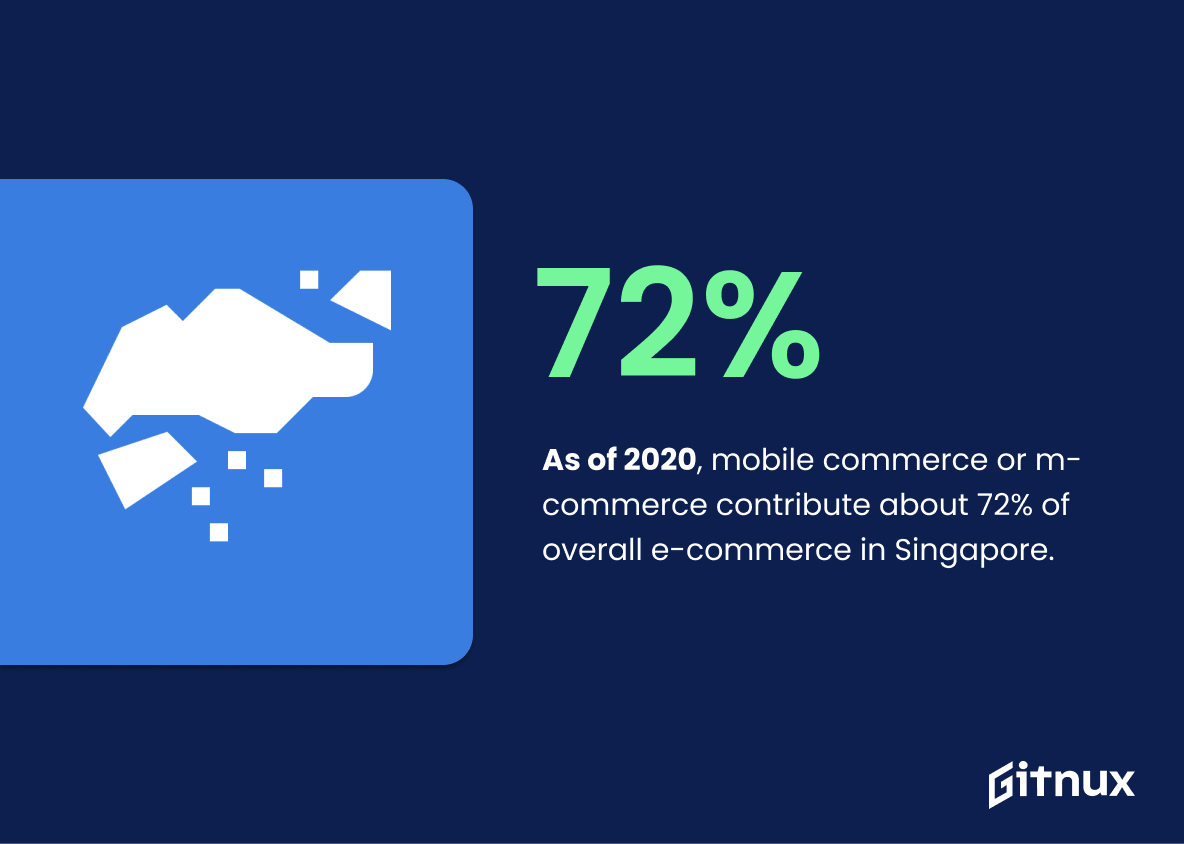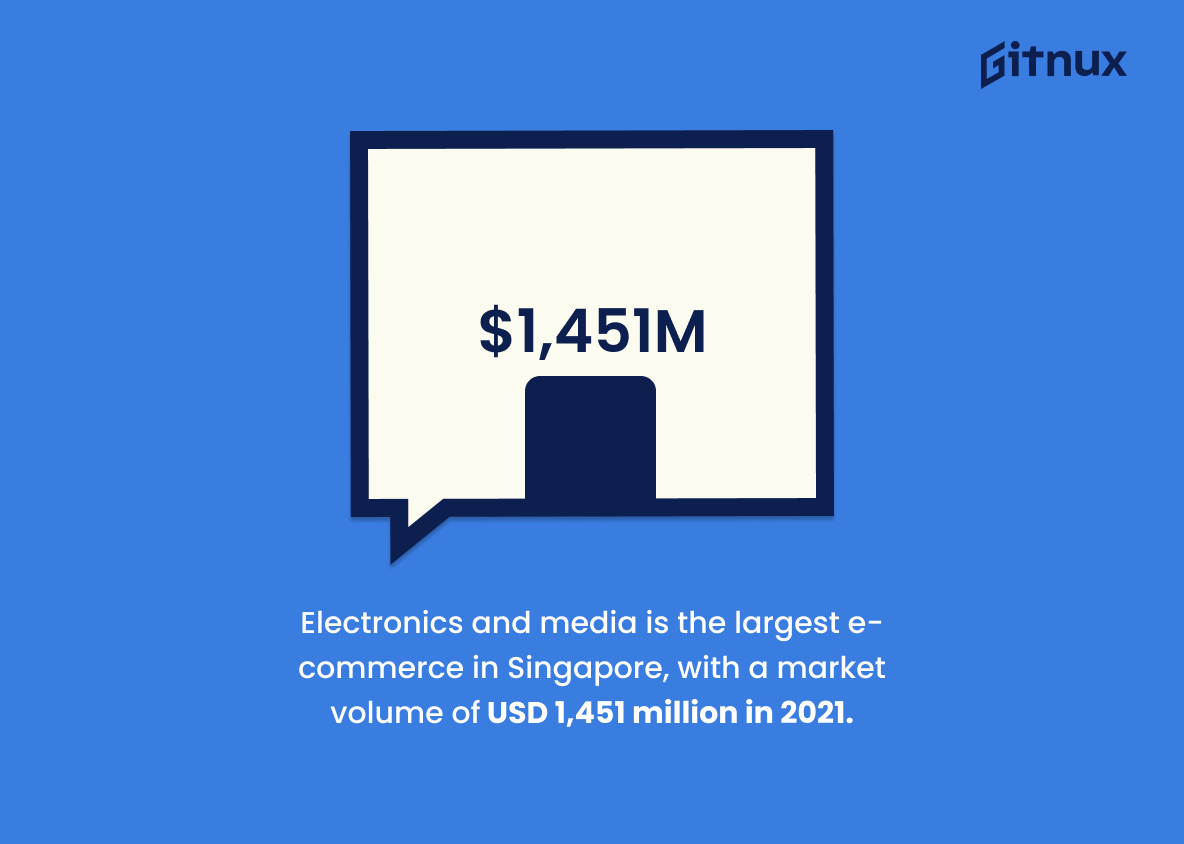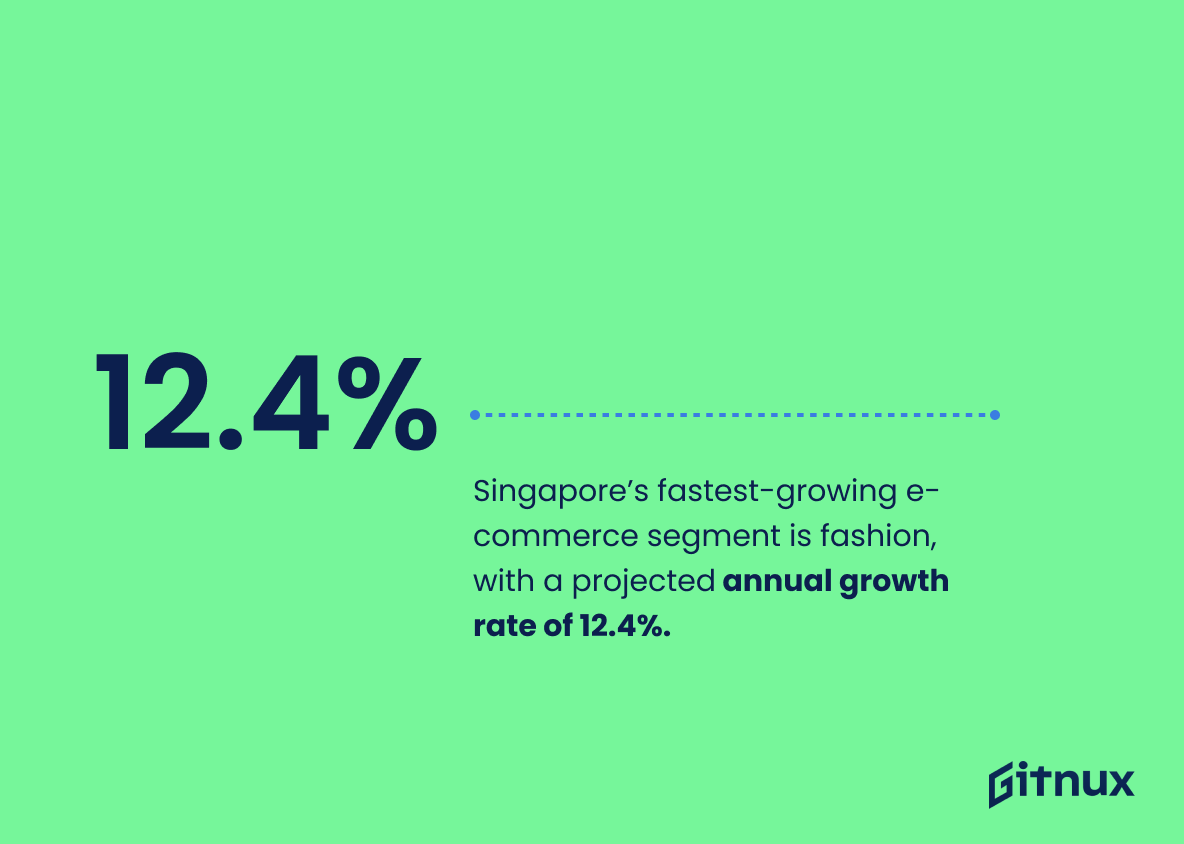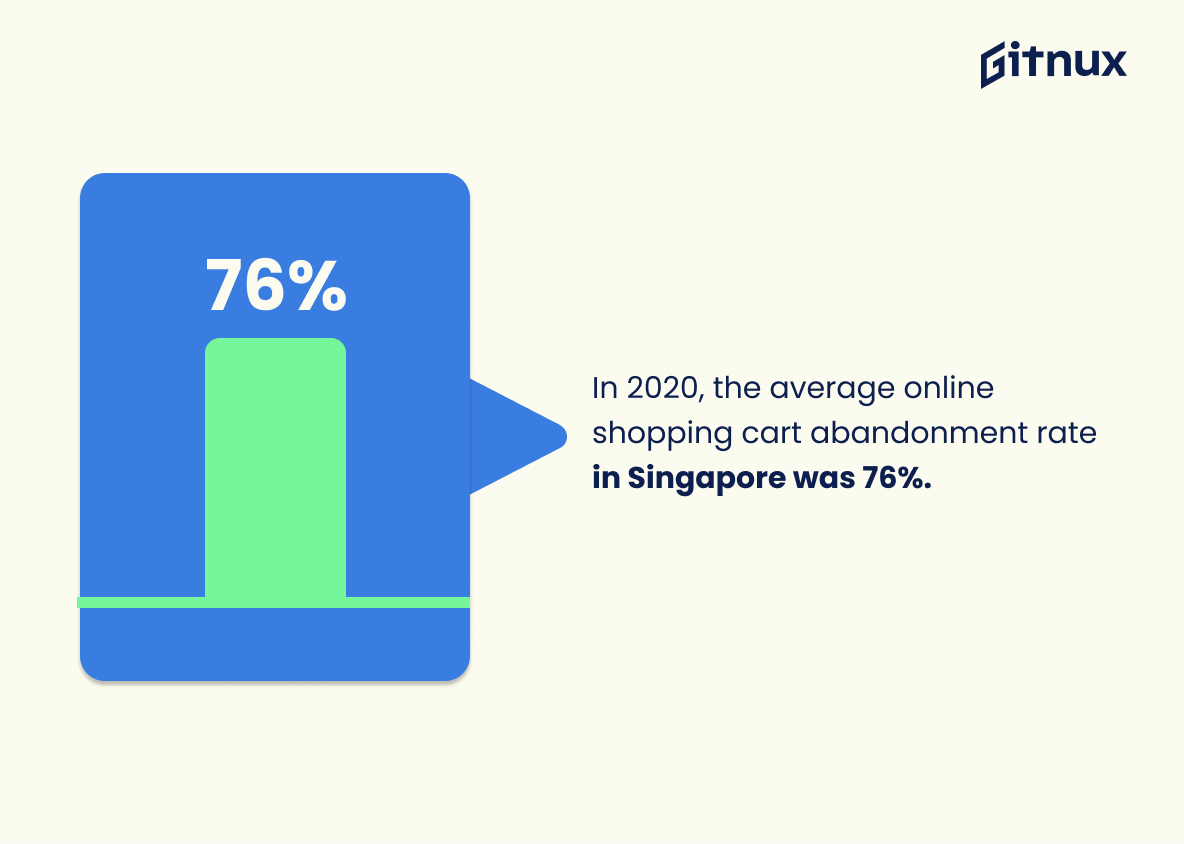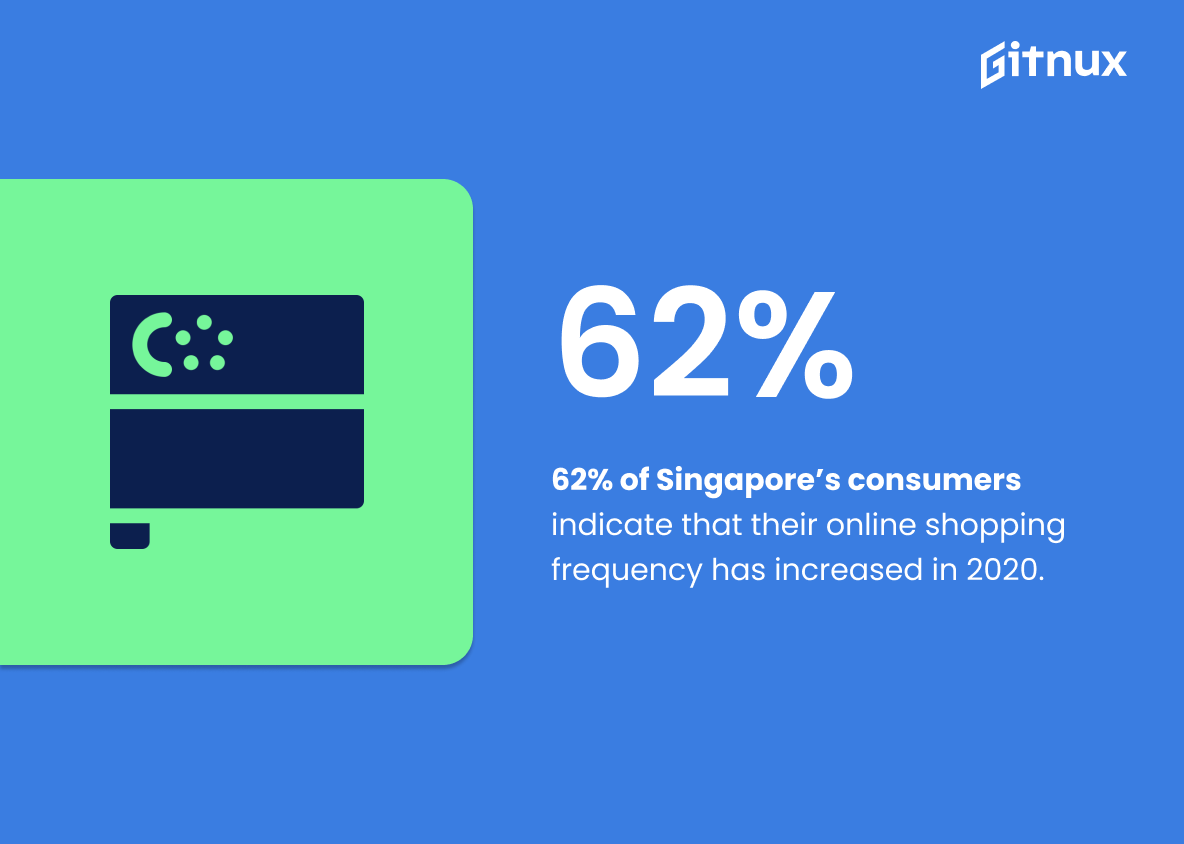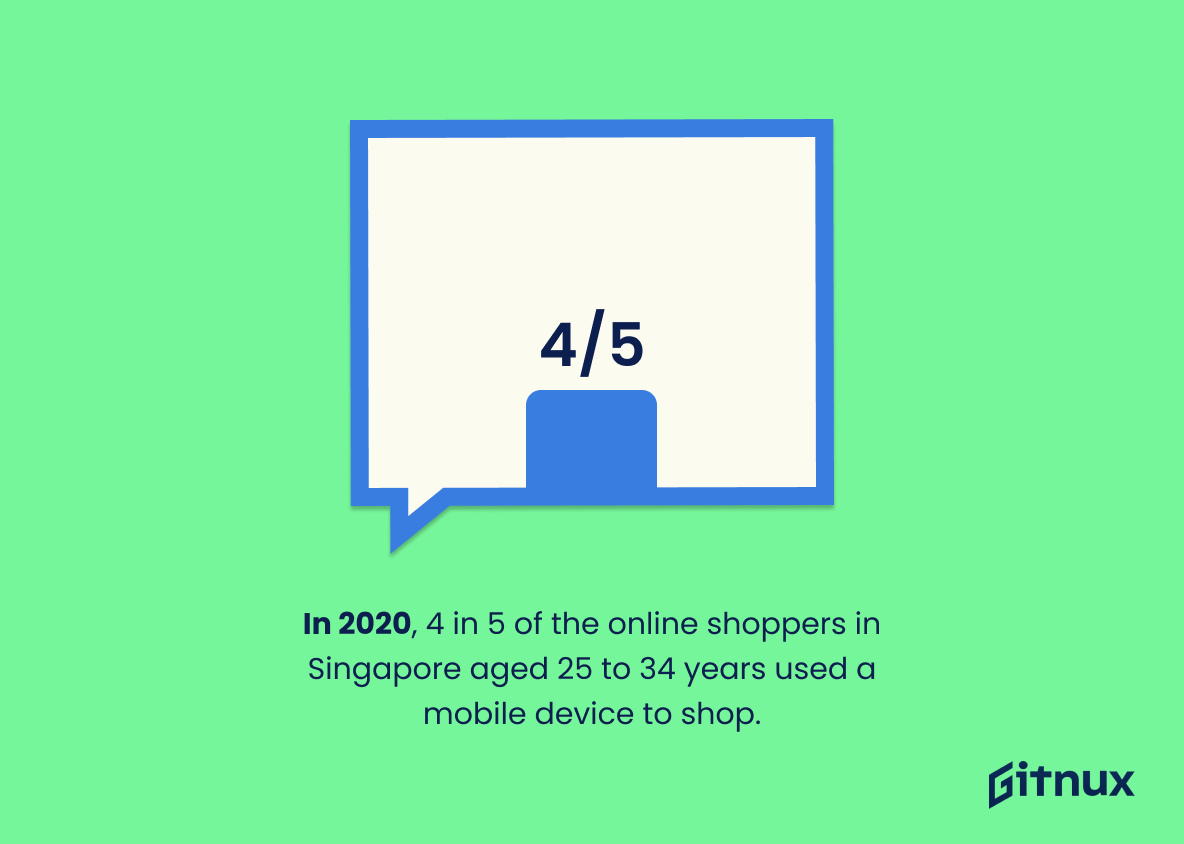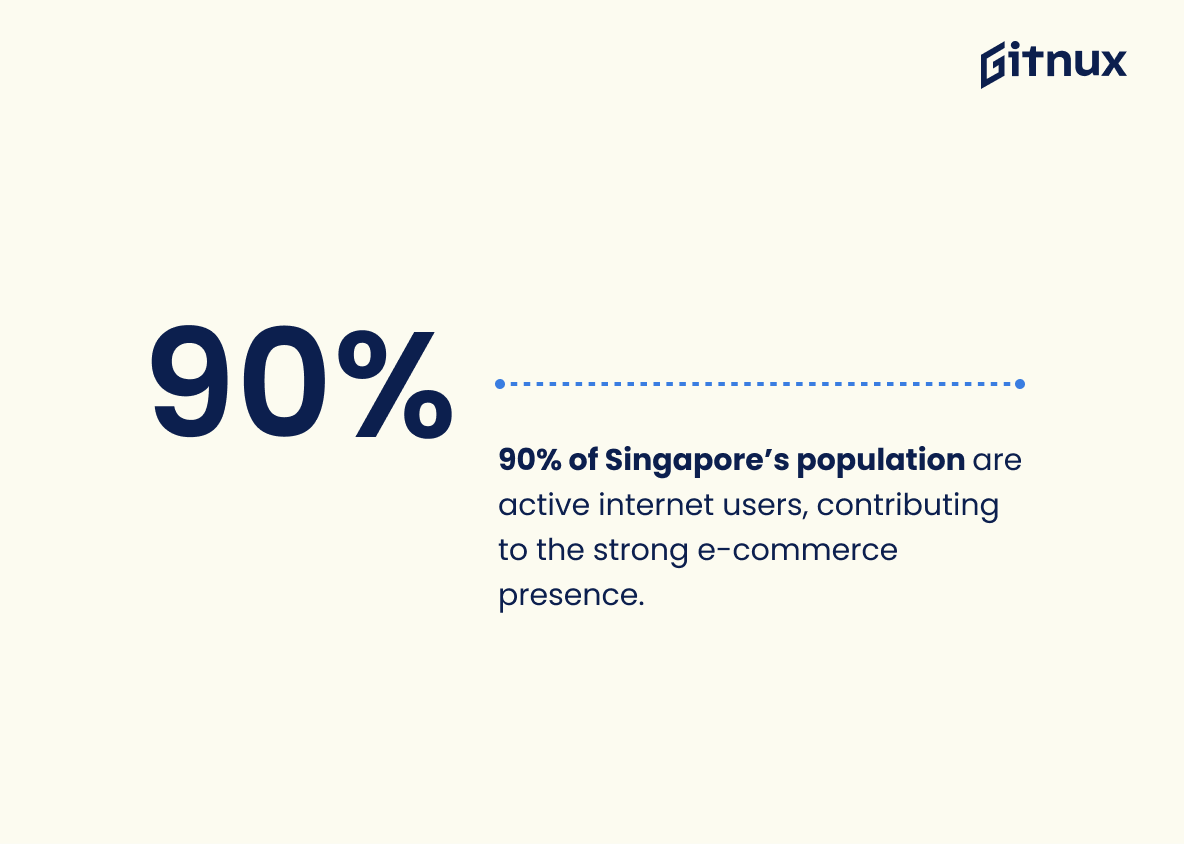E-commerce in Singapore has seen tremendous growth over the past few years, with revenue increasing by 23.6% in 2020 and projected to reach USD 4,780 million by 2025. Online shoppers are spending an average of USD 1,062 a year on e-commerce platforms such as Shopee and Lazada which have the highest number of monthly web visits at 17.5 million and 14.2 million respectively as of July 2021. Mobile commerce or m-commerce contributes about 72% of overall e-commerce transactions in Singapore while online banking is the most popular method for making payments at 84%. The Consumer Sentiment Index score also increased 6.68%, signaling increased consumer confidence when engaging with e-commerce activities this year – all contributing to an impressive 79.4% penetration rate for eCommerce across Singapore’s population who are mostly active internet users (89%). This blog post will explore these statistics further along with other key insights into E Commerce Singapore Statistics including fashion being one of its fastest growing segments; Amazon having 25% market share among 16 to 64 age group consumers; and 75.9 % cart abandonment rate amongst others.
This statistic is a testament to the success of Singapore’s e-commerce industry in 2020, highlighting the impressive growth of the sector. It is a clear indication that Singapore is a leader in the e-commerce space, and provides a valuable insight into the potential of the industry in the future. As such, it is an important statistic to consider when discussing e-commerce Singapore statistics.
In 2020, the e-commerce penetration rate in Singapore stood at 79.4%.
This statistic is a testament to the fact that Singapore is a leader in the e-commerce space. It highlights the country’s commitment to digital transformation and its ability to embrace the latest technologies. It also shows that Singaporeans are increasingly turning to online shopping for their needs, which is a great opportunity for businesses to tap into this growing market. This statistic is an important indicator of the potential for e-commerce in Singapore and should be taken into consideration when discussing the future of e-commerce in the country.
E Commerce Singapore Statistics Overview
As of 2020, mobile commerce or m-commerce contribute about 72% of overall e-commerce in Singapore.
This statistic is a testament to the power of mobile commerce in Singapore. It highlights the importance of m-commerce in the e-commerce landscape, and how it has become a major driving force in the country’s e-commerce industry. This statistic is a valuable insight for businesses looking to capitalize on the growing trend of mobile commerce in Singapore, and provides a useful benchmark for understanding the current state of the e-commerce industry in the country.
Electronics and media is the largest e-commerce segment in Singapore, with a market volume of USD 1,451 million in 2021.
This statistic is a powerful indicator of the potential of e-commerce in Singapore. It shows that the sector is growing rapidly and is becoming an increasingly important part of the economy. It also highlights the importance of the sector to the country’s overall economic health, as it is a major source of income for businesses and individuals alike. This statistic is a valuable resource for anyone looking to gain insight into the current state of e-commerce in Singapore and the potential for further growth.
Singapore’s fastest-growing e-commerce segment is fashion, with a projected annual growth rate of 12.4% between 2021 and 2025.
This statistic is a clear indication of the potential of Singapore’s e-commerce fashion industry. It shows that the sector is growing rapidly and is likely to continue to do so in the coming years. This makes it an attractive option for businesses looking to capitalize on the booming e-commerce market in Singapore. By highlighting this statistic in a blog post about E Commerce Singapore Statistics, readers can gain a better understanding of the potential of the industry and the opportunities it presents.
In 2020, the average online shopping cart abandonment rate in Singapore was 75.9%.
This statistic is a telling indication of the state of e-commerce in Singapore. It highlights the fact that, despite the convenience of online shopping, a large proportion of customers are still not completing their purchases. This could be due to a variety of factors, such as high shipping costs, lack of payment options, or a complicated checkout process. Understanding the reasons behind this high abandonment rate is essential for e-commerce businesses in Singapore to improve their customer experience and increase their sales.
As of 2021, 25% of online consumers in Singapore aged 16 to 64 made a purchase from Amazon in the past month.
This statistic is a telling indication of the growing popularity of Amazon in Singapore’s e-commerce landscape. It shows that a significant portion of online consumers in Singapore are actively engaging with Amazon, suggesting that the platform is becoming an increasingly important part of the country’s e-commerce ecosystem. This is an important point to consider when discussing the current state of e-commerce in Singapore, as it highlights the growing influence of Amazon in the market.
62% of Singapore’s consumers indicate that their online shopping frequency has increased in 2020.
This statistic is a telling indication of the impact of the pandemic on Singapore’s e-commerce industry. It shows that the majority of Singapore’s consumers have shifted to online shopping as a result of the pandemic, which has had a significant impact on the industry. This statistic is important for understanding the current state of the e-commerce industry in Singapore and the potential opportunities for businesses to capitalize on this shift in consumer behavior.
In 2020, 4 in 5 of the online shoppers in Singapore aged 25 to 34 years used a mobile device to shop.
This statistic is a telling indication of the importance of mobile devices in the e-commerce landscape of Singapore. It highlights the fact that the majority of online shoppers in the 25-34 age group are using mobile devices to shop, which means that businesses must ensure their websites are optimized for mobile devices in order to capture this large segment of the market. This statistic is also important for understanding the preferences of Singaporean shoppers and how they are adapting to the digital age.
89.9% of Singapore’s population are active internet users, contributing to the strong e-commerce presence.
This statistic is a testament to the power of Singapore’s e-commerce presence, as it demonstrates the vast majority of the population actively engaging with the internet. This high level of engagement provides a strong foundation for the growth of e-commerce in Singapore, as it indicates a large potential customer base for businesses to tap into.
Conclusion
E-commerce in Singapore has seen tremendous growth over the past few years, with revenue increasing by 23.6% in 2020 and projected to reach USD 4,780 million by 2025. Online shoppers are spending an average of USD 1,062 a year on e-commerce platforms such as Shopee and Lazada which have the highest number of monthly web visits at 17.5 million and 14.2 million respectively as of July 2021. Mobile commerce or m-commerce contributes about 72% of overall e-commerce transactions while online banking is the most popular method for payment accounting for 84%. The Consumer Sentiment Index score also increased 6.68%, indicating that consumers feel more confident engaging with e-commerce than ever before due to its convenience and accessibility from anywhere anytime using their smartphones – 86% use it as their primary device for shopping – making up 79.4% penetration rate across all age groups in Singapore today
References
0. – https://www.ecommerce-platforms.com
1. – https://www.techaeris.com
2. – https://www.nielsen.com
3. – https://www.statista.com
4. – https://www.datareportal.com
5. – https://www.thinkwithgoogle.com
6. – https://www.datareportal.com
ZipDo, cited June 2023: E Commerce Singapore Statistics
